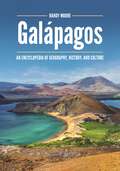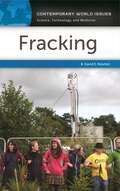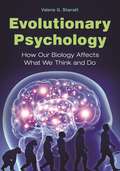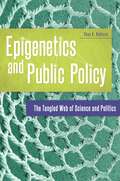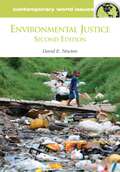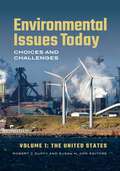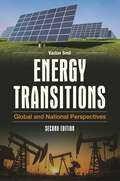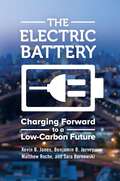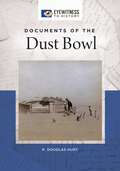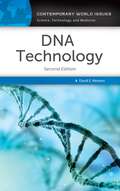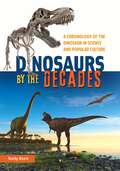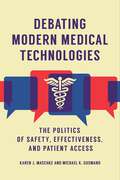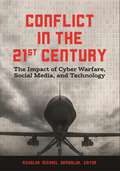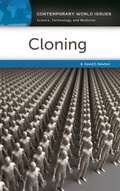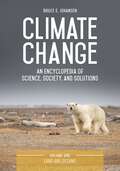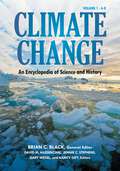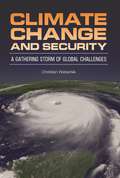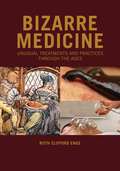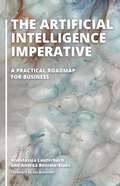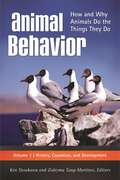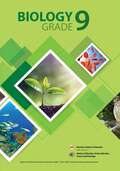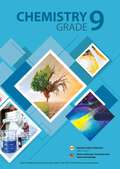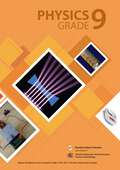- Table View
- List View
Galápagos: An Encyclopedia of Geography, History, and Culture
by Randy MooreThis encyclopedia provides readers with a comprehensive look at the Galápagos Islands, from the wildlife and scientists that made them famous to the challenges and issues the islands face today.In the mid-1800s, the Galápagos Islands served as Charles Darwin's playground, a volcanic archipelago where he famously worked on his theories of evolution and natural selection. But who actually discovered the islands? Why didn't any country claim them for more than 200 years? And is ecotourism hurting or helping these mysterious islands?This volume explores the history, science, and culture of the Galápagos Islands. A Preface, Introduction, Chronology, and Galápagos at a Glance primer introduce readers to the islands that are so famously associated with Charles Darwin. Twelve thematic essays allow readers to explore such topics as evolution, the geology of the islands, invasive species, and tourism in depth. Topical entries follow, covering key individuals and organizations as well as other important concepts and ideas.Thirteen primary document excerpts allow readers to study firsthand accounts from explorers and visitors to the islands. Appendices, a glossary, a bibliography, and sidebars round out the text. Students of history, geography, and science will find this volume informative, while general readers will be intrigued to learn about these unique islands.
Fracking: A Reference Handbook (Contemporary World Issues)
by David E. NewtonThe use of fracking is a tremendously important technology for the recovery of oil and gas, but the advantages and costs of fracking remain controversial. This book examines the issues and social, economic, political, and legal aspects of fracking in the United States.Hydraulic fracturing of oil and gas wells—known commonly as "fracking"—has been in use in the United States for more than half a century. In recent years, however, massive expansion of shale gas fracturing across the nation has put fracking in the public eye. Is fracking a "win win" like its proponents say, or are there significant costs and dangers associated with the use of this energy production technology? This book examines fracking from all angles, addressing the promise of the United States becoming energy independent through the use of the process to tap the massive amounts of natural gas and oil available as well as the host of problems associated with fracking—groundwater contamination and increased seismic activity, just to mention two—that raise questions about the long-term feasibility of the process as a source of natural gas.The first part of the book provides a historical background of the topic; a review of technical information about fracking; and a detailed discussion of the social, economic, political, legal, and other aspects of the current fracking controversy. The second part of the book provides a host of resources for readers seeking to learn even more in-depth information about the topic, supplying a chronology, glossary, annotated bibliography, and profiles of important individuals and organizations. Written specifically for students and young adults, the content is accessible to readers with little or no previous knowledge regarding fracking.
Evolutionary Psychology: How Our Biology Affects What We Think and Do
by Valerie G. StarrattThis book considers the complexities of human nature from a biological, psychological, and evolutionary standpoint and demonstrates how common modern behaviors can be traced back to early man.From common phobias to our interactions with the opposite sex, the traits and behaviors that helped us to survive and thrive tens of thousands of years ago continue to have an impact on our thought processes, tendencies, and actions today. This fascinating reference examines the history, major themes and findings, and future direction of evolutionary psychology, a theory defined by a human being's ability to adapt and change in confluence with its environment. The work highlights contemporary debates and enduring questions in the field.Filled with fascinating insights into the mind/body connection, the book addresses the evolutionary traits that can answer questions such as "Why do people crave cheeseburgers, chips, and chocolate?", "How do men and women think about problems differently?", and "Why do people cheat?" Each chapter has thematic headings, and topics include survival, mating, parenting, culture, and religion, among others. A list of references and suggested readings after each chapter points readers toward additional sources of information.
The Euthanasia/Assisted-Suicide Debate (Historical Guides to Controversial Issues in America)
by Demetra M. PappasThis revealing volume explores recent historical perspectives on the modern euthanasia and assisted-suicide debate and the political arenas in which it has unfolded.Emotional public responses to widely publicized right-to-die and euthanasia cases, such as those revolving around Dr. Jack Kevorkian and Terri Schiavo, highlight their volatile mix of medical, ethical, religious, legal, and public policy issues. The Euthanasia/Assisted-Suicide Debate explores how this debate has evolved over the past 100 years as judicial approaches, legislative responses, and prosecutorial practices have shifted as a result of changes in medical technology and consumer sophistication.Emphasizing the period from the 1950s forward, the book offers an unbiased examination of the origins of the modern medical euthanasia and assisted-suicide debates, the involvement of physicians, the history and significance of medical technology and practice, and the role of patients and their families in the ongoing controversy. This illuminating exploration of concepts, issues, and players will help readers understand both sides of the debate as viewed by participants.
Epigenetics and Public Policy: The Tangled Web of Science and Politics
by Shea K. RobisonThe exciting field of epigenetics offers novel and unanticipated science-based insights into human origins and development. This book presents one of the first detailed examinations of the political implications of epigenetics.Epigenetics—the study of internal and environmental factors that affect how genes are turned on or off and how cells read those genes—is a rapidly emerging science akin to genetics that introduces a number of novel and unexpected biological explanations of human origins and development. It also poses fundamental challenges to many of the assumptions of the prevailing science of genetics. When science changes, how does public policy respond?This book comprehensively considers the political implications of the emerging science of epigenetics in specific policy domains, addressing the intersections of epigenetics with cancer, obesity, the environment, and the law. Author Shea K. Robison carefully navigates the messy history of genetics and epigenetics in order to explore what changes in public policy might come in the age of a new scientific frontier. Readers will understand how new findings in epigenetic research and increased acceptance of epigenetic science may lead to paradigm shifts in cancer prevention and treatment, significantly different policy solutions for combating obesity, and revised statutes of limitations and laws regarding civil and corporate liability and wrongful life.
Environmental Justice: A Reference Handbook (Contemporary World Issues)
by David E. NewtonEnvironmental Justice: A Reference Handbook, Second Edition offers a current overview of the environmental inequities faced by poor and minority communities and the development of the grassroots movement working to address them.Building on the original edition's focus on the link between social inequalities and the uneven distribution of environmental hazards in the air, water, and soil, Environmental Justice: A Reference Handbook, Second Edition presents a contemporary look at the convergence of the environmental movement and civil rights activism.Environmental Justice, Second Edition follows the rise and maturation of the movement focused on environmental racism, describes solutions that have been implemented, and examines issues that remain unresolved. The book offers a wealth of new data and information, particularly in its expanded coverage of environmental disparities in developing countries and its rich bibliography of print and online resources.
Environmental Issues Today [2 volumes]: Choices and Challenges [2 volumes]
by Robert J. Duffy and Susan M.This two-volume set provides an authoritative overview of the major environmental issues of the 21st century, with a special focus on current challenges, trends, and policy choices.This set provides an up-to-date, comprehensive, and focused resource for understanding the nature and scope of environmental challenges facing the United States and the world in the 21st century, as well as options for meeting those challenges. Volume One covers environmental trends and challenges within the United States, while Volume Two illuminates environmental issues and choices around the world. Issues covered in both volumes include vital topics such as climate change, air and water pollution, natural resource and species protection, and agricultural/industrial impacts on the environment and public health. For all topics, the authors—scholars and experts hailing from a wide range of environmental and policy fields—detail a range of political, social, and economic options for the future and explain why the issue in question is important for society and people as well as the natural world.
Energy Transitions: Global and National Perspectives
by Vaclav SmilThis book provides a detailed, global examination of energy transitions, supplying a long-term historical perspective, an up-to-date assessment of recent and near-term advances in energy production technology and implementation, and an explanation of why efforts to limit global warming and to shift away from fossil fuels have been gradual.Based on the best international and national statistical sources, the second edition of Energy Transitions: Global and National Perspectives supplies an in-depth evaluation of how economies and nations around the world are striving to move away from traditional energy sources, the unfolding decarbonization process, and problems with intermittent energies and national transition plans. It supplies readers with a clear introduction to the basic properties of energy systems and key concepts of their appraisal, puts energy transition patterns in long-term historical perspective, and looks at the energy transition in eight of the world's leading economies. The last chapters focus on the advances in the decarbonization of the global energy supply and consider how the energy transition will continue in the coming decades.This fully updated and substantially expanded edition addresses the many new developments affecting energy supply, such as the recent expansion of hydraulic fracturing, oil price fluctuations, the Fukushima nuclear power plant catastrophe, advances in solar and wind generation, adoption of combined cycle gas turbines, and increased availability of electric cars. The coverage highlights the differences in the pace of transitions in various countries, thereby providing a complete and accurate picture of the current state of energy development in different parts of the world. The book serves as an invaluable resource for students as well as for anyone interested in a realistic appraisal of the current state of energy transitions in various nations and regions and the likely future development of the global energy supply.
The Electric Battery: Charging Forward to a Low-Carbon Future
by Kevin B. Jones Benjamin B. Jervey Matthew Roche Sara BarnowskiAn easy-to-understand and engaging exploration of the battery's development across history that reveals current technological advances, celebrates the innovators who have led the charge forward, and shows how the electric battery represents the path to a low-carbon future.Now more than ever, consumers want to understand not only the basic facts behind the electric battery and the challenges of battery storage in everyday devices, including vehicles, but also whether increased, widespread application of battery technology has real environmental benefits that could change the future of our planet. Is 21st-century battery technology the foundation on which our low-carbon future will be built? The Electric Battery: Charging Forward to a Low-Carbon Future documents the long history of the battery and identifies the reasons it is now a key to achieving a low-carbon world. The book provides an unprecedented and easy-to-understand explanation of both the policy issues and technological challenges facing the battery in the quest to significantly reduce humanity's collective "carbon footprint" on the earth. Readers will be able to intelligently evaluate the chances of electric storage batteries ultimately becoming as mainstream as petroleum-product-fueled infrastructure and vehicles. The chapters in the book break down the complexity of the technology and elucidate the historic confluence of events that makes battery technology economically viable to any reader looking to understand the technological and policy breakthroughs that could enable a low-carbon future—for this generation as well as for subsequent ones.
Documents of the Dust Bowl (Eyewitness to History)
by R. Douglas HurtThis book provides a unique, thorough, and indispensable resource for anyone investigating the causes and consequences of the Dust Bowl.During the 1930s, drought and the cultivation of submarginal lands created a severe wind-erosion problem in the southern Great Plains, a region that became known as the Dust Bowl. During the worst dust storms, the blowing soil often turned day into night. Some people died when caught outside during a black blizzard, others developed "dust pneumonia," and some residents moved to California. Most people, however, remained. Those who stayed and endured the storms had an abiding faith that federal resources and the return of normal rainfall would end the dust storms and return life to normal, free from the desperation and fear caused by the blowing soil.Documents of the Dust Bowl offers a fascinating documentary history of one of the worst ecological disasters in American history. It will enable high school students and academics alike to study the manner in which Dust Bowl residents confronted and endured the dust storms in the southern Great Plains during the 1930s.
DNA Technology: A Reference Handbook (Contemporary World Issues)
by David E. NewtonThis accessibly written book introduces readers to DNA—one of the most important technologies for the manipulation of all forms of life, from simple bacteria to plants and animals. It also addresses the most important social, ethical, political, economic, and other issues raised by this form of technology.The great strides made in our understanding of the structure and function of DNA in recent decades have led to applying this invaluable knowledge to use in serving humanity. For example, recent discoveries in the field of genetic editing have created the potential for the creation of life forms de novo, a possibility that results in profound ethical issues for the human race that are just beginning to be discussed. What other positive—and potentially negative—developments are coming our way with continuing advancements in DNA research? DNA Technology: A Reference Handbook provides an up-to-date historical overview and general technical background to the topic as well as a broad introduction to current issues related to the development of DNA technology, such as genetically modified organisms, the use of DNA technology in the forensic sciences, and genetic testing and genetic therapy.Written by David E. Newton, an author and former teacher who has dedicated a lifetime to authoring educational texts on science and technology, this book examines the history of DNA technology from its discovery in the 1950s to the present day and covers recent advances, such as new methods for gene editing, including CRISP-Cas9 technology. Readers need to have little or no background knowledge of the technology of genetic engineering to improve their understanding of DNA-based technologies and how DNA research influences many current issues and debates in agriculture, food science, forensics, public health, and other fields. The single-volume work is particularly well-suited to students and young adults because of the range of references included that serve further study, such as a glossary of terms, a chronology, and an extensive annotated bibliography.
Dinosaurs by the Decades: A Chronology of the Dinosaur in Science and Popular Culture
by Randy MooreProviding an appealing chronology of "all things dinosaur," this book covers these ancient creatures' roles and surprising importance in science, religion, and society at large.This exhaustive, up-to-date book contains more than 2,000 entries about dinosaurs and dinosaur-related topics. It provides not only detailed information about their discovery, underlying science, and recent technologies and theories but also encompasses all of the facets of dinosaurs in society—for example, their use in consumer marketing and promotion, popularization of dinosaurs in the media, as "proof" for both evolutionists and creationists to substantiate their claims about life's origins, and as cultural artifacts.Organized chronologically, the book offers an informative and entertaining timeline of how dinosaurs have appeared in science, religion, and society since they were discovered in the 1800s, covering everything from dinosaur museum displays to how dinosaurs served advocates of young-Earth creationism. This fascinating work enables a broad appreciation for the surprising significance of dinosaurs in many aspects of our daily lives and modern society.
Debating Modern Medical Technologies: The Politics of Safety, Effectiveness, and Patient Access
by Karen J. Maschke Michael K. GusmanoThis book analyzes policy fights about what counts as good evidence of safety and effectiveness when it comes to new health care technologies in the United States and what political decisions mean for patients and doctors.Medical technologies often promise to extend and improve quality of life but come with many questions: Are they safe and effective? Are they worth the cost? When should they be allowed on the market, and when should Medicare, Medicaid, and private insurance companies be required to pay for drugs, devices, and diagnostic tests? Using case studies of disputes about the value of mammography screening; genetic testing for disease risk; brain imaging technologies to detect biomarkers associated with Alzheimer's disease; cell-based therapies; and new, expensive drugs, Maschke and Gusmano illustrate how scientific disagreements about what counts as good evidence of safety and effectiveness are often swept up in partisan fights over health care reform and battles among insurance and health care companies, physicians, and patient advocates. Debating Modern Medical Technologies: The Politics of Safety, Effectiveness, and Patient Access reveals stakeholders' differing values and interests regarding patient choice, physician autonomy, risk assessment, government intervention in medicine and technology assessment, and scientific innovation as a driver of national and global economies. It will help readers to understand the nature and complexity of past and current policy disagreements and their effects on patients.
Conflict in the 21st Century: The Impact of Cyber Warfare, Social Media, and Technology
by Nicholas Michael SambalukThis reference work examines how sophisticated cyber-attacks and innovative use of social media have changed conflict in the digital realm, while new military technologies such as drones and robotic weaponry continue to have an impact on modern warfare.Cyber warfare, social media, and the latest military weapons are transforming the character of modern conflicts. This book explains how, through overview essays written by an award-winning author of military history and technology topics; in addition to more than 200 entries dealing with specific examples of digital and physical technologies, categorized by their relationship to cyber warfare, social media, and physical technology areas. Individually, these technologies are having a profound impact on modern conflicts; cumulatively, they are dynamically transforming the character of conflicts in the modern world.The book begins with a comprehensive overview essay on cyber warfare and a large section of A–Z reference entries related to this topic. The same detailed coverage is given to both social media and technology as they relate to conflict in the 21st century. Each of the three sections also includes an expansive bibliography that serves as a gateway for further research on these topics. The book ends with a detailed chronology that helps readers place all the key events in these areas.
Cloning: A Reference Handbook (Contemporary World Issues)
by David E. NewtonThis book provides a detailed introduction to the cloning of both plants and animals and discusses the important social, ethical, political, technical, and other issues related to the practice.The history of cloning experiments dates back more than a century, but advances in technology in recent decades have multiplied the potential applications of cloning-and expanded the controversies surrounding these possibilities. Cloning: A Reference Handbook provides an accessible description of the development of plant and animal cloning from the early stages of human civilization to the present day and coherently covers the science and technology involved. It reviews the essential controversies that have arisen about cloning-particularly applications involving human DNA-as researchers have advanced and extended the tools for cloning organisms. Additionally, the book discusses public opinion about cloning and the legislative and administration actions that have been taken with regard to the practice.This single-volume work provides a broad treatment of the subject, going back further in history than is the case with most texts, covering plant cloning and providing a thorough overview of the nature of animal cloning and related issues. Examples of the topics covered include the natural "cloning" processes of regeneration in plants and animals; crucial research breakthroughs on animal cloning by Robert Briggs and Thomas King, John Gurdon, Gail Martin, James Till and Earnest McCulloch, and others; and the laws that regulate which types of cloning are allowed and prohibited in the United States and in other countries.
Climate Change [3 volumes]: An Encyclopedia of Science, Society, and Solutions [3 volumes]
by Bruce E. JohansenThis three-volume set presents entries and primary sources that will impress on readers that what we do—or don't do—today regarding climate change will dramatically influence what life on this planet will be like for untold numbers of generations.How are the behaviors of birds, butterflies, and other migratory animals connected to climate change? What does the term "thermal inertia" mean, and what does this geophysical effect have on predicting what the planet's future will be like? What is the context for the effects we are seeing on various forms of animal life, from migrating birds to polar bears to mosquitoes that transmit Zika and other diseases?Climate Change: An Encyclopedia of Science, Society, and Solutions combines entries describing Earth's variable climatic history, references to scientific literature, weather record data, and selected primary documents to present readers with a comprehensive account of global warming's effects worldwide. By examining verifiable, quantitative information such as the frequency and intensity of hurricanes and changes in the hydrological cycle, as well as clear patterns and trends of alternating droughts and deluges and wildfires, melting ice, and rising seas, readers will be able to understand why scientists are so concerned about the future of our climate. Researchers will benefit from detailed explanations of scientific topics such as thermal inertia, feedbacks, and tipping points; and receive invaluable context on the role of energy use in climate change, including automobiles and air travel. Readers will learn about the role of China in the current global climate and in the future; the widespread effects of climate change on agriculture; and how indigenous peoples' lives are being impacted, from drought and the Navajos to hunters' lives in the Arctic. The work concludes with thought-provoking debates regarding potential solutions, from wind power and solar power to geo-engineering.
Climate Change [4 volumes]: An Encyclopedia of Science and History [4 volumes]
by Brian C. Black, David M. Hassenzahl, Jennie C. Stephens, Gary Weisel, and Nancy GiftThis book provides a holistic consideration of climate change that goes beyond pure science, fleshing out the discussion by considering cultural, historical, and policy-driven aspects of this important issue.Climate change is a controversial topic that promises to reframe rudimentary ideas about our world and how we will live in it. The articles in Climate Change: An Encyclopedia of Science and History are designed to inform readers' decision making through the insight of scholars from around the world, each of whom brings a unique approach to this topic. The work goes beyond pure science to consider other important factors, weighing the cultural, historical, and policy-driven contributors to this issue. In addition, the book explores the ideas that have converged and evolved in order to clarify our current predicament. By considering climate change in this holistic fashion, this reference collection will prepare readers to consider the issue from every angle. Each article in the work is suitable for general readers, particularly students in high school and college, and is intended to inform and educate anyone about climate change, providing valuable information regarding the stages of mitigation and adaptation that are occurring all around us.
Climate Change and Security: A Gathering Storm of Global Challenges (Security and the Environment)
by Christian WebersikHuman-induced climate change is causing resource scarcities, natural disasters, and mass migrations, which in turn destabilize national, international, and human security structures and multiply the human inputs to climate change.Alarms about the expanding role of climate change as a force multiplier of existing threats to national, international, and human security structures studies are being raised at all levels of governance and intelligence—national (including the U.S. Senate, the Director of National Intelligence, the Central Intelligence Agency, and the Pentagon), transnational (including the European Union and the United Nations), and private (such as the Central News Agency and the American Security Project). Climate Change and Security: A Gathering Storm of Global Challenges focuses on the three major feedback effects of human-induced climate change on human and international security—resource scarcity, natural disasters, and sea-level rise. Decreasing per capita availability of renewable resources due to such regional effects of climate change as drought and desertification leads to intensified competition for these resources and may result in armed violence—especially when compounded by conditions of rapid population growth, tribalism, and sectarianism, as in Darfur and Somalia. The increase in the frequency and intensity of meteorological disasters associated with global warming weakens already debilitated tropical societies and makes them still more vulnerable to political instability, as in Haiti. Sea-level rise will lead to disruptive mass migrations of climate refugees as dense littoral populations are forced to abandon low-lying coastal regions, as in Bangladesh.
Chilling Out: The Psychology of Relaxation (The Psychology of Everyday Life)
by Christine L. SelbyThis appealing, accessible reference volume enables readers to easily understand what creates and constitutes stress—an unavoidable part of modern life—and learn about the psychology behind relaxation.What is "stress," from a psychological and physiological perspective? Why is it important to "unwind" and relax? Can some forms of stress actually be good? And how do people outside the United States relax? Part of Greenwood's The Psychology of Everyday Life series, this book defines in non-scientific language what stress and relaxation are, addresses factors related to our daily experiences with stress, identifies the negative effects of stress, and describes how to reduce stress and achieve relaxation. Readers will see how relaxation techniques are practiced around the world—and by people of all ages—and learn how "chilling out" can not only make you happier but may also help you live longer.The book also provides a critical-thinking section that challenges readers with questions such as "Are relaxation drinks effective?" The opposing viewpoints, written by scholars, encourage readers to consider the evidence on both sides of the debate and decide for themselves which answer makes the most sense. The scenarios presented in the book help readers to see the practical applications for relaxation techniques via an analysis of what is happening in the example and why particular recommendations may be made.
Bizarre Medicine: Unusual Treatments and Practices through the Ages
by Ruth Clifford EngsThis encyclopedia explores historical and contemporary fringe remedies seen as strange, ridiculous, or even gruesome by modern Western medicine but which nevertheless played an important role in the history of medicine.From placing leeches on the neck to treat a cough to using crocodile dung to prevent pregnancy, a number of medical treatments that now seem unusual were once commonplace. While a few of these remedies may have been effective, most were either useless or actually counterproductive to good health. Even today, there are alternative and fringe treatments considered bizarre by mainstream medicine yet used by hundreds of thousands of people.Bizarre Medicine: Unusual Treatments and Practices through the Ages offers a fascinating look into the history of medicine. Entries are organized by disease or medical condition and explore the folk and traditional "cures" used to treat them. Explanations are provided for why some treatments may have worked and why others may have done more harm than good. In addition, entries provide a clear description of the causes, symptoms, and current treatment options for each condition based on current scientific understanding. Each entry also discusses the condition's enduring impact on society and the arts.
The Artificial Intelligence Imperative: A Practical Roadmap for Business
by Anastassia Lauterbach Andrea Bonime-BlancThis practical guide to artificial intelligence and its impact on industry dispels common myths and calls for cross-sector, collaborative leadership for the responsible design and embedding of AI in the daily work of businesses and oversight by boards.Artificial intelligence has arrived, and it's coming to a business near you. The disruptive impact of AI on the global economy—from health care to energy, financial services to agriculture, and defense to media—is enormous. Technology literacy is a must for traditional businesses, their boards, policy makers, and governance professionals. This is the first book to explain where AI comes from, why it has emerged as one of the most powerful forces in mergers and acquisitions and research and development, and what companies need to do to implement it successfully. It equips business leaders with a practical roadmap for competing and even thriving in the face of the coming AI revolution. The authors analyze competitive trends, provide industry and governance examples, and explain interactions between AI and other digital technologies, such as blockchain, cybersecurity, and the Internet of Things. At the same time, AI experts will learn how their research and products can increase the competitiveness of their businesses, and corporate boards will come away with a thorough knowledge of the AI governance, ethics, and risk questions to ask.
Animal Behavior [3 volumes]: How and Why Animals Do the Things They Do [3 volumes]
by Alison M. Bell Andrew P. King Anna Dornhaus Anne Danielson-François Anthony C. Little Benedict C. Jones Bennett G. Galef Brett M. Gibson Brian Keane Bronwyn H. Bleakley Çağlar Akçay Carolynn L. Smith Catherine A. Marler Charles T. Snowdon Christopher D. Watkins Christopher Harshaw Christopher S. Evans David B. Mcdonald David Clark David Crews David F. Sherry David J. White Douglas W. Mock Geoffrey E. Hill George Uetz Guillermo Paz-Y-Miño-c James L. Gould Janis L. Dickinson Jason Low Jeffrey R. Alberts Ken Yasukawa Kenyon B. Mobley Laura Smale Lee Alan Dugatkin Lee C. Drickamer Lisa M. Debruine Mark E. Hauber Matthew J. Fuxjager Megan Hastings Hagenauer Meredith J. West Michael D. Beecher Michael J. Ryan Michelle Pellissier Scott Nancy G. Solomon Rachel A. Page Renée A. Duckworth S. Craig Roberts Sarah Jane Alger Sean P. Bradley Terry J. Ord Theodore Stankowich Walter D. Koenig Ximena E. Bernal Zenobia Lewis Zuleyma Tang-MartínezDiscover why animals do what they do, based on their genes, physiologies, cultures, traditions, survival and mating advantages, and evolutionary histories—and find out how studying behavior in the animal world helps us understand human behavior.The three volumes of Animal Behavior: How and Why Animals Do the Things They Do cover the breadth of the field, addressing causation, development, function, and evolution in a wide range of animals, from invertebrates to humans. Inspired by Nobel laureate Nikolaas Tinbergen's work, the first two volumes follow Tinbergen's four classic questions of animal behavior, while the third volume supplies integrated examples of Tinbergen's investigative process applied in specific cases.Written in an engaging, accessible manner ideal for college students as well as general audiences, this evidence-based collection provides a fascinating tour of animal behaviorists' findings, such as how animal communication can be truthful or deceitful, the deadly serious business behind clashes in the "battle of the sexes," and how documentation of animal behavior can lead to a deeper understanding of human behavior. Each chapter provides both historical background and information about current developments in animal behavior knowledge.
Biology class 9 - MIE
by Mauritius Institute of EducationThe Grade 9 Biology textbook from the Mauritius Institute of Education covers four comprehensive units. The first unit delves into the intricacies of the human Blood Circulatory System, exploring the structure and functions of blood, the heart, and blood vessels. It addresses topics like blood cell types, pulse, and cardiovascular diseases. The Reproduction unit explores both asexual and sexual reproduction in living organisms, detailing the structures and functions of human male and female reproductive systems, fertilization, embryo development, and the significance of reproductive health. The Biodiversity unit introduces the concept's importance for survival, explaining how to estimate species using quadrats and addressing factors affecting biodiversity. The final unit, Nutrition in Plants, delves into photosynthesis, emphasizing factors like light, carbon dioxide, water, and chlorophyll, and includes practical demonstrations on starch presence in leaves.
Chemistry class 9 - MIE
by Mauritius Institute of EducationThe Grade 9 Chemistry textbook published by the Mauritius Institute of Education in 2023 covers five comprehensive units designed to provide students with a foundational understanding of key chemical concepts. Unit C1 delves into the composition of air, exploring topics like the greenhouse effect, global warming, and pollution, while also suggesting measures for environmental protection. Unit C2 focuses on mixtures and separation techniques, introducing methods like sublimation and crystallization. Unit C3 teaches the language of chemistry, encompassing symbols, valencies, and chemical equations. Unit C4 explores the properties and reactions of metals, introducing the reactivity series and displacement reactions. Finally, Unit C5 delves into the formation, classification, and properties of salts, including common examples. Each unit is rich with activities, diagrams, tables, and exercises to engage students and foster their understanding of these fundamental chemistry concepts.
Physics class 9 - MIE
by Mauritius Institute of EducationThe textbook offers a comprehensive overview of Grade 9 Physics from the Mauritius Institute of Education, specifically focusing on the Measurement in Science unit. It includes information on contributors involved in the textbook's creation and review, curriculum alignment with national standards, and an emphasis on incremental content development and scientific skills from previous grades. Learning tools provided encompass inquiry-based activities, summaries, "Find out" features, "Did you know?" sections, project work suggestions, unit summaries, and concept maps for effective learning and assessment. The unit itself covers the measurement of physical quantities such as length, volume, mass, time, and temperature, offering detailed explanations, error avoidance techniques, and practical activities to aid comprehension.
